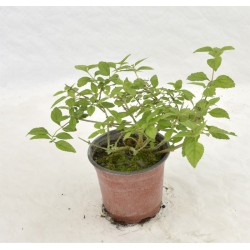Chestnut Tree
Generalities :
The European chestnut, in Italy more commonly called chestnut, is a tree belonging to the Fagaceae family and to the Castanea genus, of which it is the only native present in Europe. In recent decades, Japanese chestnut (Castanea crenata) has often been introduced for phytopathological reasons. The fruit has been used since ancient times, as has been said, for the production of chestnut flour. This use has a marginal and limited importance to the production of typical sweets, such as chestnut cake and Panmorone
- Vase: 22cm, Height: 150/170cm
Generalities:
The chestnut is an arboreal plant, with expanded and rounded crown and variable height, from 10 to 30 meters. Chestnut is a heliophilous, deciduous and deciduous species. Chestnut trees are very long-lived trees, they can become multimillennial. Flowering occurs in June and fruiting in September-October depending on the variety. Under normal conditions it develops a large columnar stem, with smooth, shiny, brownish-gray bark. The bark of the branches is white in color and is sprinkled with transverse lenticels. Over the years, the bark cracks longitudinally. The leaves are alternate, provided with a short petiole and, at the base of this, with two oblong stipules. The blade is large, even up to 20-22 cm long and up to 10 cm wide, lanceolate in shape, sharp at the apex and serrated in the margin, with sharp teeth and regularly displaced. The young leaves are tomentose, but when fully developed they are hairless, shiny and leathery in consistency. The flowers are unisexual, present on the same plant. The male flowers are gathered in small glomeruli which in turn form erect catkins, 5–15 cm long, emitted at the axil of the leaves.
Cultivation and Care :
The chestnut tree is a slow-growing plant that goes into production late, from the fifth to the sixth year after planting or grafting, however it is a very long-lived plant that can live for over a thousand years. well in the plains because it does not like hot and dry summers and prefers a not too harsh climate. This plant is sensitive to spring frosts especially in the juvenile phase. Its cultivation without the use of irrigation requires that the rains are spread over several months and not concentrated in a single season with an average of not less than 700 mm per year. It prefers fresh, well-drained, deep, fertile and gifted soil of organic matter




















